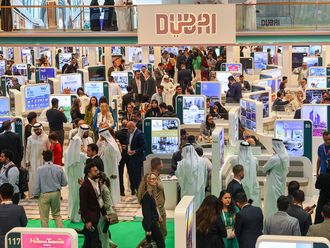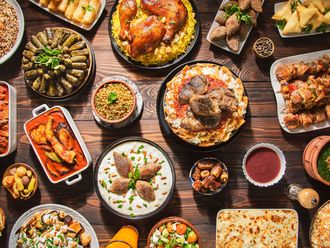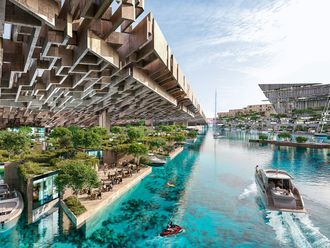Sydney: Yin Qiang, a technology manager from Beijing, travelled from Australia’s Gold Coast to Melbourne before climbing the Sydney Harbour Bridge with his wife. Next time, they might see a show at the city’s iconic Opera House. “This is a place I would go to again,” said Yin, 42, who visited Australia on work trips several times before his holiday this month. “There’s still a lot of things to explore.”
Chinese visitors are lifting an Australian tourism industry as a local currency that’s gained 55 per cent in the past four years against the US dollar and 43 per cent against the pound causes British and American arrivals to stagnate. The emergence of China’s middle class is forcing tour operators to adapt to a clientele whose numbers are mushrooming five times faster than the overall growth in visitors.
Beginning next month, people wanting to ascend 134 metres above sea level to the top of the bridge spanning Sydney Harbour will have the option to hear guides speak Mandarin. The climbs now are only available in English. “The commentary will be in Mandarin and also skewed slightly to be of more interest to the Chinese population,” said Richard Evans, managing director of BridgeClimb, the company that operates the tour.
At least 150,000 people from mainland China and across Asia were projected to descend on Sydney, Australia’s most populous city, during the New Year’s Eve and Chinese New Year period.
Last month the city held workshops for local retail, hospitality and tourism businesses on how to prepare for the influx. “The period between December until the Chinese New Year is very popular,” said Zoe Zhao, a business development assistant at Master Tours Group in Sydney. During the southern hemisphere’s warm summer months, “it’s cold in China and people have holidays.”
Master Tours is one of the 59 government-approved inbound tour operators that can bring Chinese tour groups to Australia. Popular activities among its clients include visiting Tangalooma Island in Queensland, where guests can hand-feed wild dolphins, attending Australian Football League matches and shopping for Ugg boots.
Tourism revenue is another way Australia is reaping a windfall from China, its biggest trading partner, where urbanisation requires steel and energy. Coal and iron ore mined from Australia’s more sparsely populated areas in the north and west are among its biggest exports. The Reserve Bank of Australia predicts the resources boom that has spurred the country’s 21 years of recession-free growth will peak in the next year or two, increasing a reliance on services industries such as tourism to extend the expansion.
Tourism’s share of gross domestic product declined to 2.5 per cent in the year to June 30, 2011, from 3.4 per cent a decade earlier, according to the Australian Bureau of Statistics. Arrivals in Australia reached a record high in the 12 months to October 31, driven by a 16.1 per cent jump in Chinese tourists, according to the bureau. New Zealand visitors rose 3.2 per cent, British tourists dropped 6.2 per cent and US guests gained 3.8 percent.
“The whole industry in Australia is in transition from west to east,” Andrew McEvoy, managing director of Tourism Australia, said in an interview in Sydney. Getting travellers to come back to Australia is a priority, with the repeat rate for Chinese visitors about double the rate of the Japanese, according to McEvoy. “We learned the lesson of Japan in the ‘80s and ‘90s, where a number of Japanese visitors came once and perhaps didn’t come back again,” he said. Chinese visitors are going to North America and Europe as well, with trips to Britain rising 17 per cent in the 12 months to October 31, according to provisional estimates from VisitBritain, the national tourism agency.
Travellers to the US from China, excluding Hong Kong, surged 46 per cent in the six months to June 30, according to statistics from the US Office of Travel and Tourism Industries.
Sydney Airport is releasing a full Chinese version of its iPhone application and installing Chinese-language signs in the arrivals area of the international terminal. The airport will also be doubling the number of its Mandarin-speaking volunteer guides during next year’s Chinese New Year festival in January and February. About half of the climbers scaling the Sydney Harbour Bridge are from overseas, with US and British visitors making up the bulk, Craig James, a senior economist at a unit of Commonwealth Bank of Australia, wrote in a December 5 research note. The number of Chinese, which increased by 20 per cent this year compared with last year, still make up less than 1 percent of total participants, Evans said. “This is a section of the market that is going to be important to our business immediately, and then in the middle- and longer-term,” he said. “If you’re coming from the US, just with the currency increases, the cost has gone up 50 per cent.” That’s not a concern for Wang Mingqian and Zhang Yang, business students at Shanghai University who have visited Brisbane, the Gold Coast and the island state of Tasmania during their five months living in Sydney as exchange students. Two of their friends from China are coming to Australia next month for a holiday. “We have plans to hand-feed some kangaroos and koalas,” said Wang, 22. “They’re very special and can only be found in Australia.”












